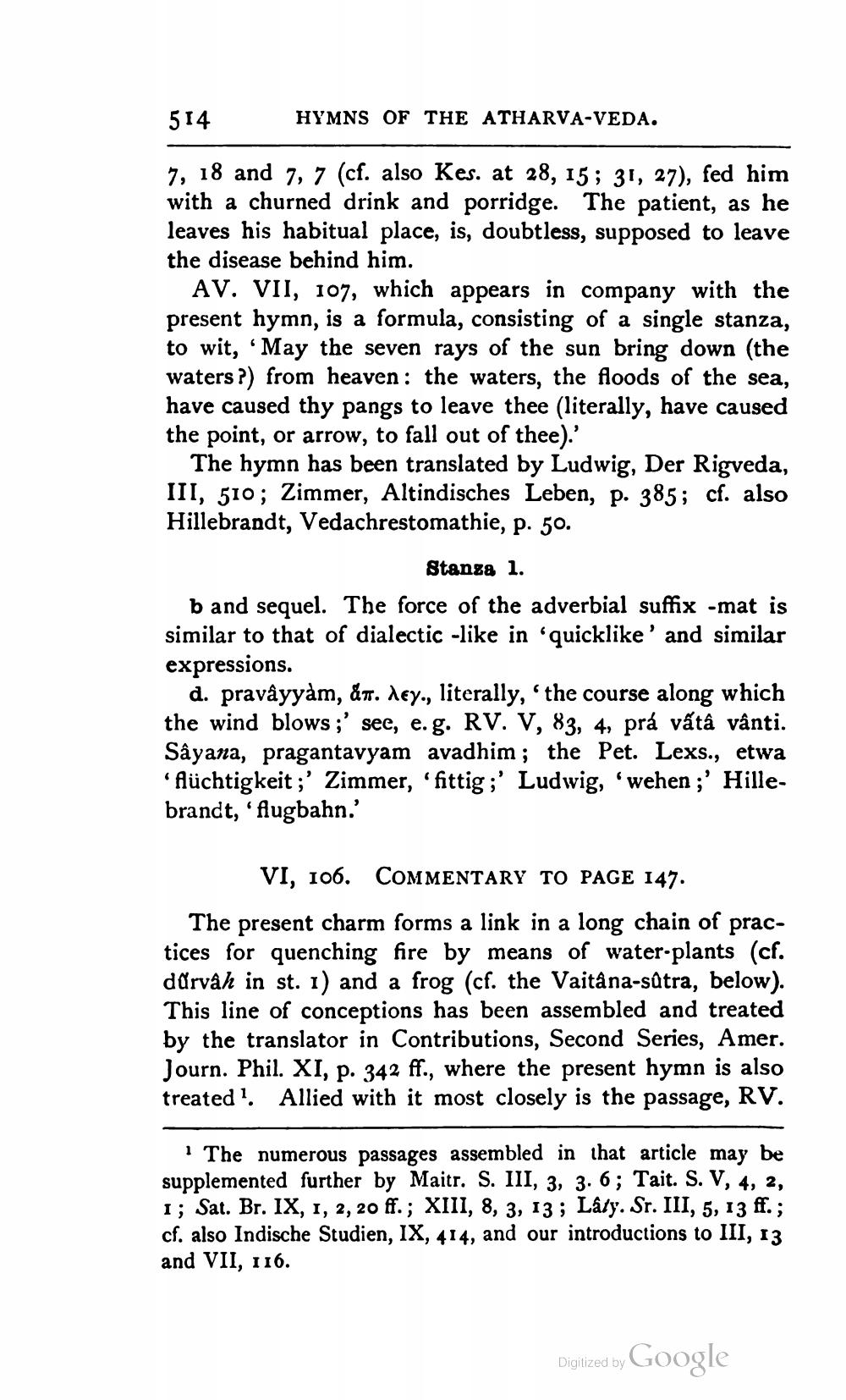________________
514
HYMNS OF THE ATHARVA-VEDA.
7, 18 and 7, 7 (cf. also Kes. at 28, 15; 31, 27), fed him with a churned drink and porridge. The patient, as he leaves his habitual place, is, doubtless, supposed to leave the disease behind him.
AV. VII, 107, which appears in company with the present hymn, is a formula, consisting of a single stanza, to wit, ‘May the seven rays of the sun bring down (the waters ?) from heaven: the waters, the floods of the sea, have caused thy pangs to leave thee (literally, have caused the point, or arrow, to fall out of thee).'
The hymn has been translated by Ludwig, Der Rigveda, III, 510; Zimmer, Altindisches Leben, p. 385; cf. also Hillebrandt, Vedachrestomathie, p. 50.
Stanga 1. b and sequel. The force of the adverbial suffix -mat is similar to that of dialectic -like in "quicklike' and similar expressions.
d. pravâyyàm, dr. dey., literally, the course along which the wind blows ;' see, e.g. RV. V, 83, 4, prá vátà vânti. Sâyana, pragantavyam avadhim; the Pet. Lexs., etwa ' Aüchtigkeit;' Zimmer, 'fittig ;' Ludwig, 'wehen ;' Hillebrandt, 'flugbahn.'
VI, 106. COMMENTARY TO PAGE 147. The present charm forms a link in a long chain of practices for quenching fire by means of water.plants (cf. důrvah in st. 1) and a frog (cf. the Vaitâna-sútra, below). This line of conceptions has been assembled and treated by the translator in Contributions, Second Series, Amer. Journ. Phil. XI, p. 342 ff., where the present hymn is also treated?. Allied with it most closely is the passage, RV.
1 The numerous passages assembled in that article may be supplemented further by Maitr. S. III, 3, 3. 6; Tait. S. V, 4, 2, 1; Sat. Br. IX, 1, 2,20 ff.; XIII, 8, 3, 13 ; Lâty. Sr. III, 5, 13 ff.; cf. also Indische Studien, IX, 414, and our introductions to III, 13 and VII, 116.
Digized by Google




